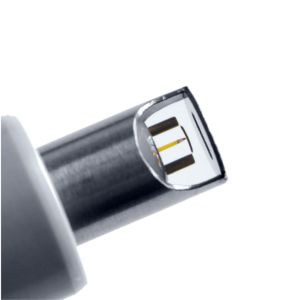FI/FD/LIFDI
Soft Ionisation Technology for Agilent 7200 GC/Q-TOF
SIM offers exclusive ionisation techniques for the Agilent 7200 GC/Q-TOF, where a FI/FD/LIFDI-Ionsource is installed in the Q-TOF mass spectrometer.
They are suitable for small organic analytes (eg. glucose), organometallic compounds, oligomers and polymers, as well as non-polar, high molecular analytes (eg. petrochemical fractions).
Please contact us for a detailed consultation (0208-941078-0 or ).
The ionization techniques FI (field ionization) , FD (field desorption) and LIFDI (Liquid Injection Field Desorption Ionization) are mainly used for organic molecules, which can not or only with decomposition transferred into the gas phase or which show fragmentation with EI. They are based on the principle of field ionization, in which the analytes are located on the huge surface of graphite whiskers (field emitters) where they are exposed to high electric field strengths. For this, one uses thin wolfram wires, which are activated to increase the field strength, for example with micro/nano graphite needles (whiskers). This very soft ionization methods provide simple mass spectra with low chemical noise, i.e. mainly the molecular ions (M + •), [M + Na ] + and [M + H] + and hardly fragmentation. In contrast to electron impact the forming ion receives no excess energy, so that a dissociation of the molecular ions hardly occurs. We distinguish:
Field ionization (FI):
Evaporation and transfer of the analyte in the vicinity of the emitter (e. g. GC/MS) → lowest sensitivity of these ionization methods
Field desorption (FD):
Analyte is applied directly to the emitter (at atmospheric pressure), which is then converted into the high vacuum of the mass spectrometer → not suitable for oxygen-sensitive analytes
Liquid Injection Field Desorption Ionization (LIFDI):
Further development of FI and FD: emitter is permanently in a high vacuum of the MS, the analyte is transferred through a capillary on the back of the emitter (see fig. LIFDI source and emitter during sampling)
literature:
T. A. Dransfield, R. Nazir, R. N. Perutz, A. C. Whitwood, Liquid injection field desorption/ionization of transitional metal fluoride complexes, J. Fluorine Chem. 131, 11 (2010) 1213; doi:10.1016/j.jfluchem.2010.05.008
J. H. Gross, Liquid injection field desorption/ionization mass spectrometry of ionic liquids, J.Am. Soc. Mass Spectrom. 18 (2007) 2254, doi:10.1016/j.jasms.2007.09.019

